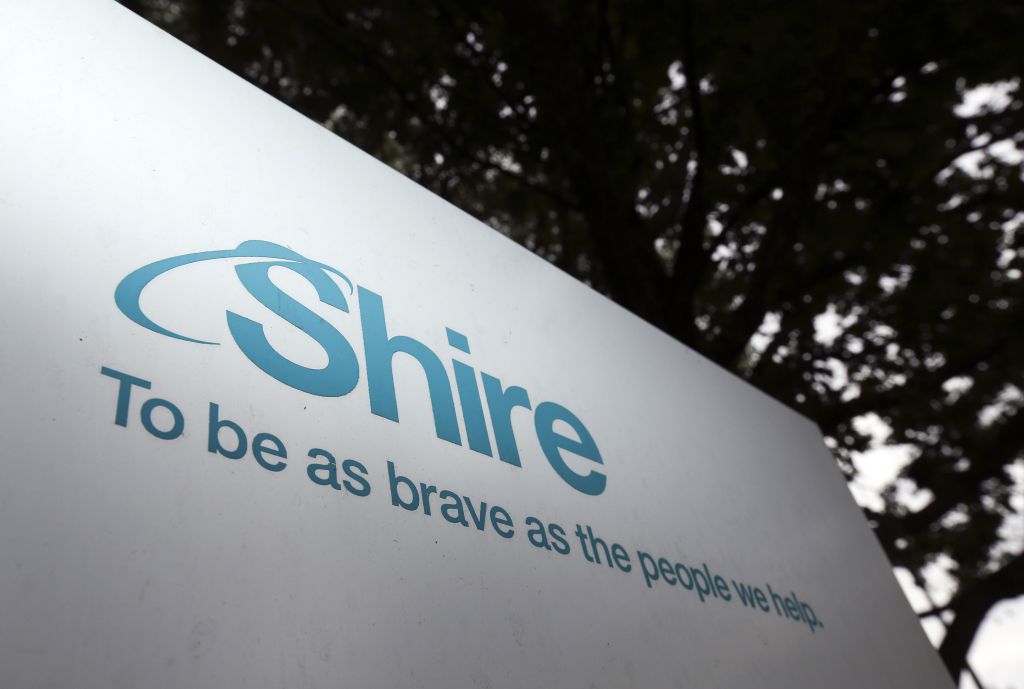
Stocks may be at new highs and sentiment bullish, but the exuberance hasn’t infected every sector. Biotechnology has yet to reach new highs, and has been consolidating for almost three years. The iShares NASDAQ Biotechnology Index (ETF) (NASDAQ:IBB) remains at the same level as way back in February 2014. Buying a three-year consolidation in an industry with big potential is generally considered a smart move, but it can be honed further.
There are two ways to go in this sector. On one end there are the speculative companies which offer high risk and high reward, and on the other, Big Pharma, low risk but lower reward. Here the focus will be on the latter while trying to squeeze as much reward out of that lower-level risk as possible. Case in point, Shire PLC (ADR) (NASDAQ:SHPG).
Shire has been struggling along with the rest of the biotech complex since 2014, but it has also underperformed the sector over the last five years. Since 2012, biotech is up 170%, but Shire is up only 75%. This could be about to change over the next two to three years because, aside from a three year consolidation setting up for a general biotech run, key data from a phase IIa trial in its second biggest market is about to be reported.
This trial is being somewhat ignored because Shire already has a strong grip on the hemophilia market, selling close to $1 billion each quarter. That’s about 50% market share. So what good would yet another hemophilia drug do to grow its top and bottom lines? And why is an early stage clinical trial important for a company of its size?
That data is about to be reported was not explicitly stated by Shire, but a press release out today from its partner on the project, Xenetic Biosciences Inc. (NASDAQ:XBIO) indicates that Shire paid a $3 million milestone “related to Shire’s advancing the Phase 1/2a clinical study for the PSA-Recombinant SHP656 or Factor VIII (“FVIII”) being developed as a long-acting therapeutic for the treatment of hemophilia.”
The language is a bit vague due to the proprieties of the partnership between Xenetic and Shire, but it’s reasonable to assume here that the payment means either recruitment was completed, or that trial data is about to be reported, or possibly even that data is positive. The trial, filed under the auspices of Baxalta before Shire acquired it, is open label and scheduled for completion in March, so the data is not masked to either Xenetic or Shire and it is almost finished. This we know for sure.
So why is an early stage trial like this so important for Shire? Precisely because the market it addresses is one of Shire’s biggest. The drug, SHP656 is designed as a longer-acting version of blood factor VIII, lacking in hemophiliacs. If successful it would mean a once weekly shot as opposed to three times a week, cutting costs significantly and improving quality of life. There is currently no once-weekly factor VIII on the market, but Roche Holding Ltd. (OTCMKTS:RHHBY) is trying to get there first with emicizumab. There have been some difficulties for Roche with some patients reporting blood clots, but nothing too serious yet. If Shire is going to keep its grip on 50% market share, it will eventually need its own long-acting version on the market.
That’s why the trial is crucial, and obviously for Xenetic as well. As for Xenetic, they have $100 million in potential milestones plus royalties riding on this, with Shire paying the development bill, quite a big prospect for a $36 million company.
With results coming in soon, those who understand Shire’s markets and what it needs to secure in order to stay ahead of the competition, will see positive data as a big long term plus for the company. A longer-acting version of a hemophilia drug may not be the most headline-making news, but for Shire it may be key to maintaining and even growing its global lead in one of its most crucial markets.
Such things can’t be taken for granted these days, especially in the fast-moving biotech space. The pressures we’ve seen on Gilead Sciences (NASDAQ:GILD) and Sanofi SA (NYSE:SNY) for example in their own respective markets of hepatitis C and diabetes, are not isolated. For biotech investors, It may be time to focus on improving core products just as much as developing new treatments for unmet needs. The latter is of course important, but should not overshadow core business.




